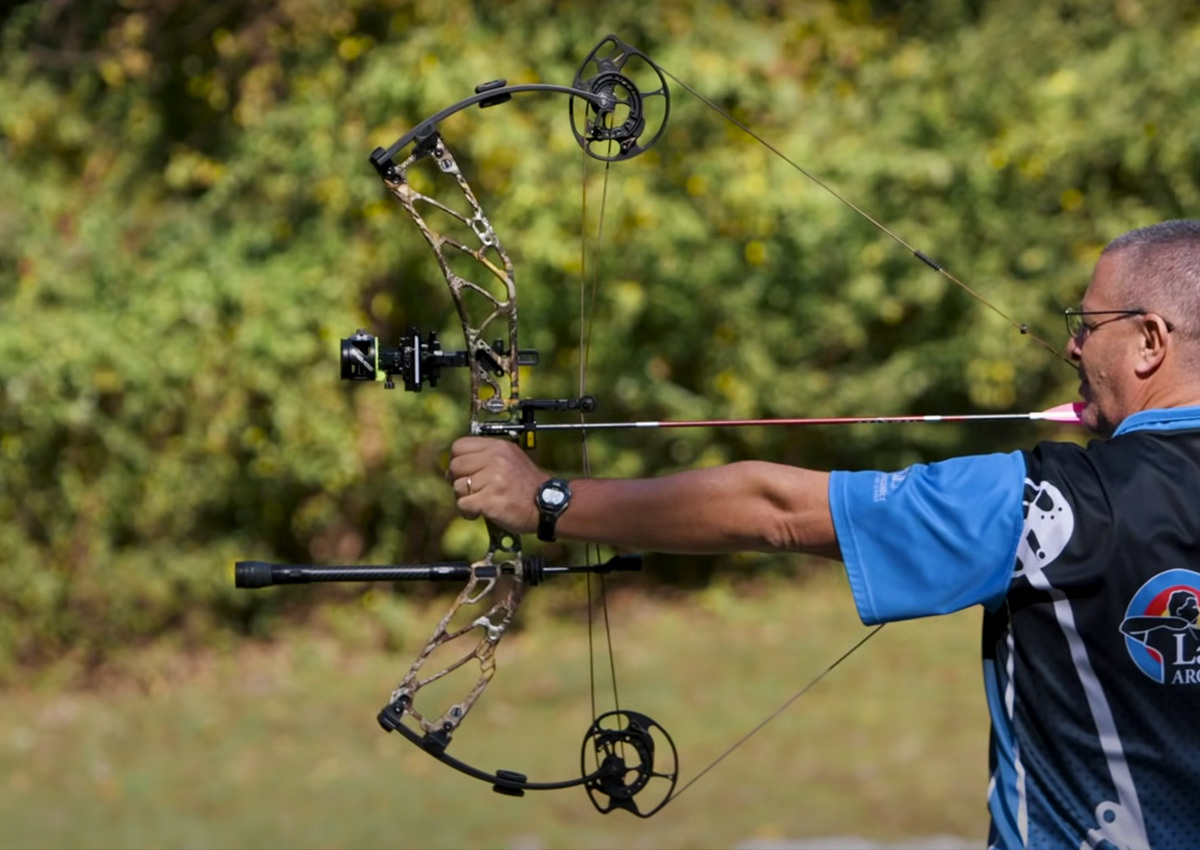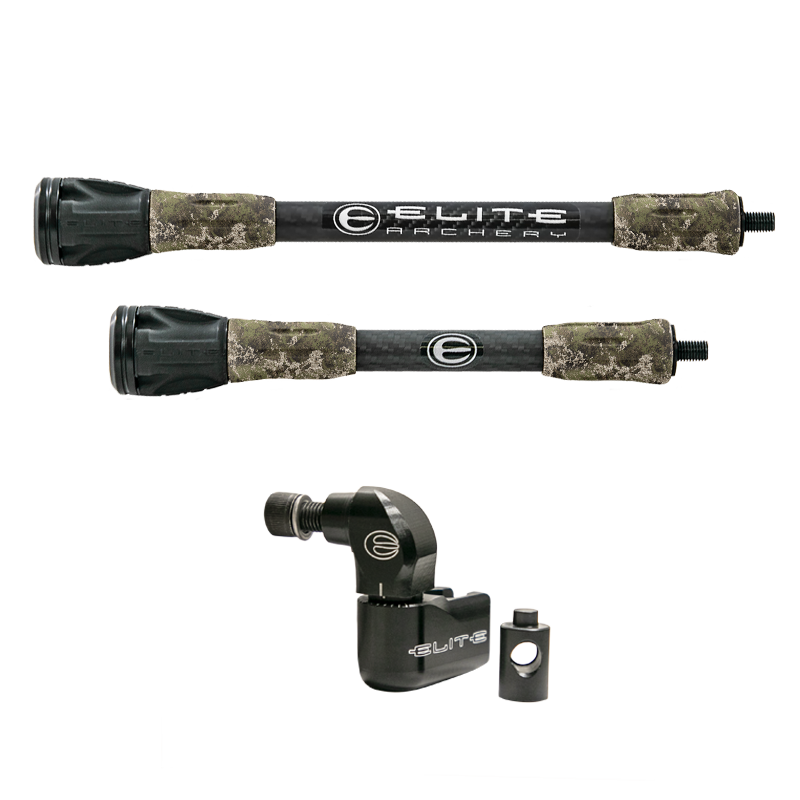Upgrade Your Archery Arrangement: Top-rated Archery Stabilizers Reviewed
Upgrade Your Archery Arrangement: Top-rated Archery Stabilizers Reviewed
Blog Article
Optimize Your Archery Performance With the Perfect Stabilizer: an Extensive Customer's Guide
Archery enthusiasts understand the significance of having the best devices to improve their performance. While arrows and bows might take the limelight, an essential item of gear that usually goes neglected is the stabilizer. A stabilizer can significantly affect your shooting accuracy and stability, yet discovering the excellent one can be a complicated job. In this extensive buyer's overview, we will certainly explore the various sorts of stabilizers, vital elements to think about, the value of proper size and weight, choosing the right damping system, and upkeep ideas. Whether you're a seasoned archer or just beginning out, this overview will aid you browse the globe of stabilizers and maximize your archery performance.
Kinds Of Stabilizers
There are 3 main kinds of stabilizers typically made use of in archery efficiency. These stabilizers play a crucial function in enhancing accuracy and minimizing bow torque. The first type is the lengthy rod stabilizer. Lengthy pole stabilizers are generally affixed to the front of the bow and extend outwards. They offer balance and security throughout the shot, lessening any type of unnecessary movement. Long pole stabilizers are especially reliable in lowering bow torque, permitting an extra stable and constant launch.
The 2nd type of stabilizer is the side pole stabilizer. Side rod stabilizers are connected to the side of the bow and assistance counterbalance any kind of lateral movements.
The third type of stabilizer is the V-bar stabilizer. V-bar stabilizers are usually used in conjunction with side pole stabilizers to additionally enhance stability.
Recognizing the various types of stabilizers is essential when selecting the best devices to optimize archery efficiency. Each stabilizer type offers a specific purpose, and choosing the appropriate combination can dramatically enhance accuracy and uniformity on the array or in the field.
Secret Elements to Consider

First and leading, it is necessary to consider the length and weight of the stabilizer. Longer stabilizers provide enhanced security and equilibrium, while much shorter ones provide even more ability to move. The weight of the stabilizer influences the general equilibrium of the bow, and it is necessary to find a stabilizer that enhances the weight of your bow.
An additional essential aspect to take into consideration is the product of the stabilizer. Stabilizers are generally made from light weight aluminum, carbon, or a mix of both. Light weight aluminum stabilizers are durable and provide excellent resonance moistening, while carbon stabilizers are lightweight and offer superior vibration absorption.
In addition, it is necessary to assess the style and adjustability of the stabilizer. Some stabilizers include adjustable weights and dampeners, allowing you to personalize the equilibrium and vibration control. Additionally, considering the installing options and compatibility with your bow is important to make sure a appropriate and safe and secure fit.
Last but not least, budget is a substantial element to consider. Stabilizers come in a series of prices, and it is critical to discover one that fits within your spending plan while still fulfilling your efficiency requirements.
Importance of Correct Length and Weight

Proper length and weight are critical elements that substantially impact the efficiency of an archery stabilizer. The size of the stabilizer establishes its effectiveness in decreasing bow torque and vibrations. archery stabilizer. Longer stabilizers give better security and balance, leading to boosted accuracy and consistency in arrowhead trip. On the other hand, much shorter stabilizers are extra manoeuvrable and provide better control throughout rapid target purchase. It is necessary to think about the shooting style, target distance, and individual preference when selecting the length of a stabilizer.
Similarly, the weight of the stabilizer plays a vital function in achieving optimum efficiency. A heavier stabilizer takes in extra vibration and lowers bow movement throughout the shot, resulting in a steadier objective and tighter groups. However, a stabilizer that is too heavy can cause exhaustion and influence the shooter's capability to hold steady. It is necessary to strike an equilibrium between weight and ability to move to facilitate comfortable shooting and preserve uniformity.
Furthermore, the length and weight of the stabilizer ought to work with the archer's physical strength and capturing strategy. By selecting the ideal size and weight, archers can maximize their security, decrease bow torque, boost precision, and improve total performance. It is suggested to seek advice from with experienced archers or experts to make certain the most effective suit between the stabilizer and individual capturing needs.
Picking the Right Damping System
The selection of a proper damping system is vital in optimizing the performance of an archery stabilizer. A damping system is developed to lower the resonances and sound created when an arrowhead is launched, providing the archer with an extra steady and exact shot. When picking the right damping system for your stabilizer., there are a number of elements to take into consideration.
To start with, it Recommended Reading is essential to think about the sort of product made use of in the damping system. Rubber and rubber-like products are commonly made use click for more of due to their capability to absorb resonance successfully. These materials are additionally durable and light-weight, making them perfect for archery stabilizers.
Second of all, the layout of the damping system ought to be taken into consideration (archery stabilizer). Search for a system that offers multiple call factors with the stabilizer, as this will certainly disperse the resonances a lot more uniformly and even more enhance the stabilizer's effectiveness
In addition, take into consideration the adjustability of the damping system. Having the ability to make improvements the degree of damping can be advantageous, as different archers might have varying choices and shooting designs.
Finally, it is important to make certain that the picked damping system is compatible with your stabilizer. Inspect the measurements and specs to guarantee a correct fit.
Maintenance and Treatment Tips
To ensure ideal efficiency and durability of your archery stabilizer, it is necessary to carry out correct maintenance and care strategies. Oiling the relocating components of the stabilizer, such as the dampers and weight system, is additionally important to ensure smooth operation. By complying with these maintenance and care pointers, you can make the most of the performance and longevity of your archery stabilizer.
Verdict
Finally, choosing the best stabilizer for archery is essential for optimizing performance. By considering aspects such as stabilizer type, length, weight, and damping system, archers can improve their accuracy and security. her response Additionally, correct maintenance and treatment of the stabilizer is essential for its longevity and optimum functioning. With the best stabilizer and proper interest to these elements, archers can boost their overall archery experience.
The 2nd type of stabilizer is the side rod stabilizer.The 3rd kind of stabilizer is the V-bar stabilizer. V-bar stabilizers are typically utilized in conjunction with side pole stabilizers to further boost stability. The weight of the stabilizer impacts the total equilibrium of the bow, and it is important to locate a stabilizer that enhances the weight of your bow.
Aluminum stabilizers are sturdy and offer excellent resonance dampening, while carbon stabilizers are lightweight and offer superior resonance absorption.
Report this page